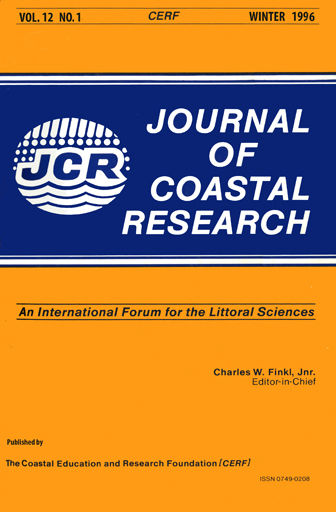Morphology and Size of Ebb Tidal Deltas at Natural Inlets on Open-sea and Pocket-bay Coasts, North Island, New Zealand
Keywords:
Sediment processes, tidal inlet, tidal prism, sea-level rise, sand miningAbstract
Sand volumes and morphologies of 17 ebb tidal deltas off natural inlets on the New Zealand North Island coast, in both open-sea and pocket-bay settings, were investigated. Four basic ebb-delta forms were identified. 'Free form' deltas, typically 'bat-winged' in shape, occur on open shorelines. 'Constricted' deltas are similarly shaped hut occur in shoreline angles lacking space for the free form to fully develop. 'High-angle half-deltas' are typically shore-normal or 'L-shaped' and occur in embayment corners where the ebb jet flows against the rocky headland, resulting in a significant shoal forming only on the beach side of the inlet. 'Low-angle half-deltas' are almost shore-parallel sand 'wedges' that form between the ebb jet and the beach where the ebb jet is forced by rock controls to flow at a low angle to the beach. Sand storage volumes ranged from 3.8 x 104 m3 to 1.2 x 1010 m3. The main controls on ebb delta sand volume (V) are the tidal prism volume (P), the angle between the outflow jet and the shoreline (θ), and the wave climate. The empirical equation
V = 1.37 x 10-3 P1.32(sin θ)1.33
accounts for 83% of the variance in sand volume in the dataset. Deltas on the high-energy west coast tended to be smaller than east coast deltas with similar tidal prisms. The supply of littoral drift also appears to influence delta volume in some cases. These results may be used to help assess permissible rates of sand mining from ebb deltas, to estimate ebb-delta sand entrapment associated with changes in the tidal prism, and to re-design the alignment of inlet channels in order to control ebb-delta sand volumes.


